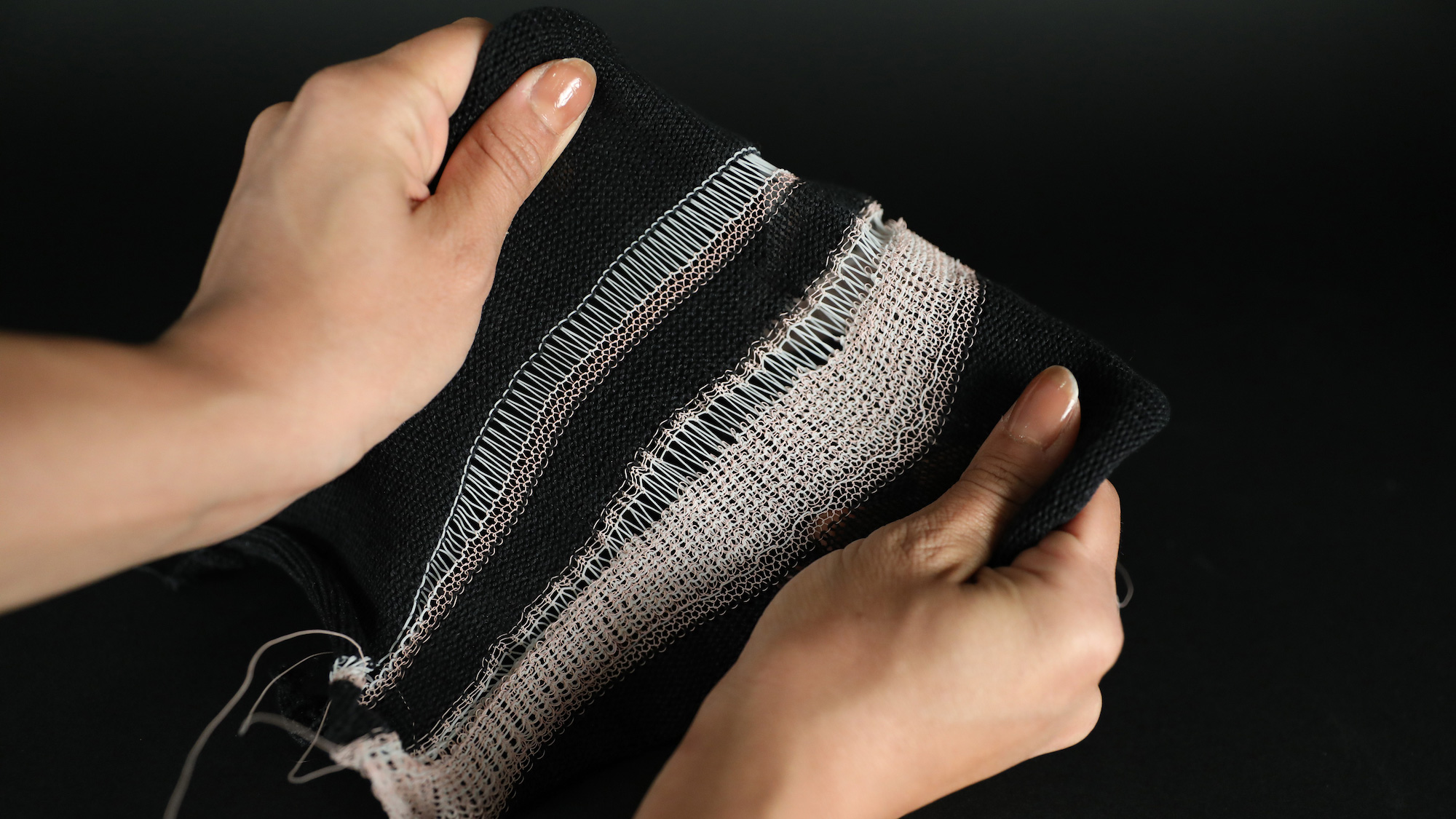

Have you ever left the house without a jacket on a balmy day, only to regret overestimating your chilly weather tolerance? Instead of dashing back home for your coat, there may come a time in the near future when you simply use an app to control your clothing’s level of insulation.
Created by researchers at MIT, FibeRobo is a cheap, programmable, shape-changing smart fiber reliant on a liquid crystal elastomer (LCE). Among their many uses, garments imbued with their new LCE fiber could adjust their structure to become more insulated in colder temperatures, and vice versa for warmer weather. With an additional ability to combine with electrically conductive threads, a wearer could directly control their FibeRobo clothing or medical wearables like compression garments via wireless inputs from a controller or smartphone.
[Related: The US wants to dress military in smart surveillance apparel.]
As detailed in a recent institute profile, LCEs are composed of molecules possessing liquid-like properties that can also arrange into periodic crystal formations once cool and inert. Importantly, the team’s new synthetic LCE can morph between its phases at safe, comfortable temperature levels—an industry first.
The result is a fiber capable of contracting when exposed to heat, and self-reversing as temperatures drop without any external sensors or interwoven components. What’s more, FibeRobo is flexible and strong enough to use within traditional manufacturing methods like embroidery, weaving looms, and knitting machines.
To make the new threads, engineers first designed a glue gun-like machine that slowly excretes heated LCE resin through a nozzle. The fiber is then cured for the first time using UV lights, submerged in oil, then cured once again using even stronger UV rays. After its manufacturing is complete, the LCE thread is spooled and dipped in a powder to make it easier to install textile production machines. According to MIT, the team can produce roughly a kilometer of usable fiber within a single day.
As proof of concepts, the MIT team used an industrial knitting machine to weave a Bluetooth-controlled compression dog jacket to help with anxiety, then tested the vest on one of the researchers’ pets. Another prototype served as an adaptive sports bra, with FibeRobo embroidery that tightened the fabric as its user began to exercise.
Going forward, the team wants to fine-tune their LCE’s composition to make it either biodegradable or recyclable, as well as simply the overall design.
“At the end of the day, you don’t want a diva fiber,” Jack Forman, an MIT graduate student and paper lead author, said in a statement. “You want a fiber that, when you are working with it, falls into the ensemble of materials—one that you can work with just like any other fiber material, but then it has a lot of exciting new capabilities.”
While many current smart textile projects are trying to reinvent how a person can interact with their clothing–from interwoven sensors that interpret health data to “SMART ePANTS” that aid in surveillance and security–these apparel ventures perhaps may one day expand the number of garments in your closet. Meanwhile, this newest iteration may actually downsize your wardrobe.
